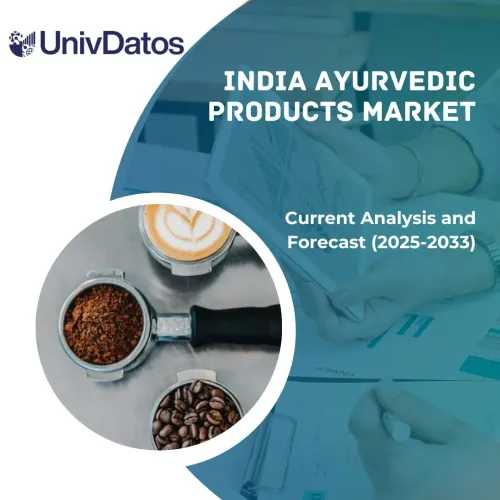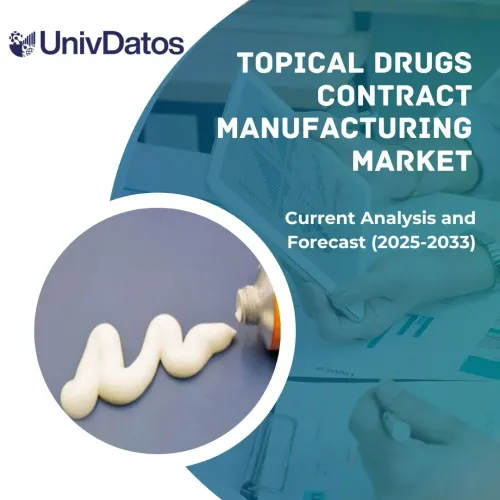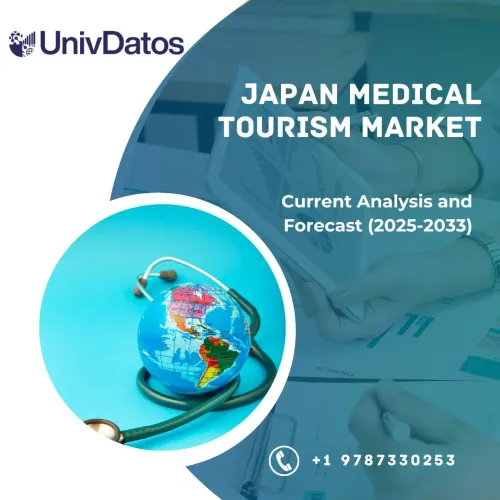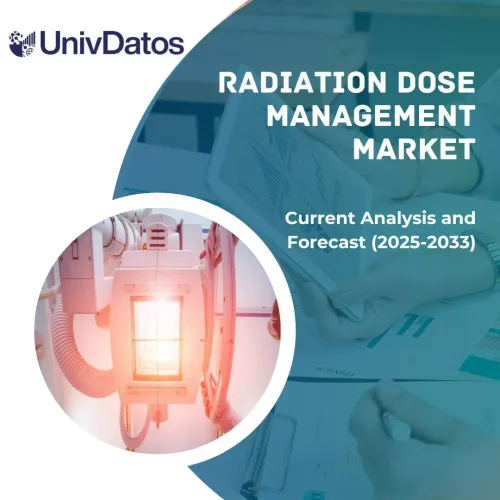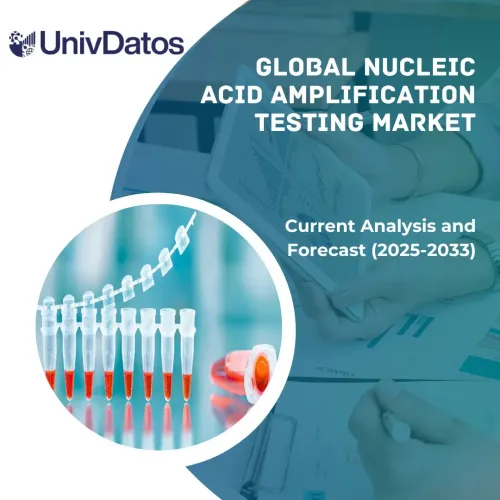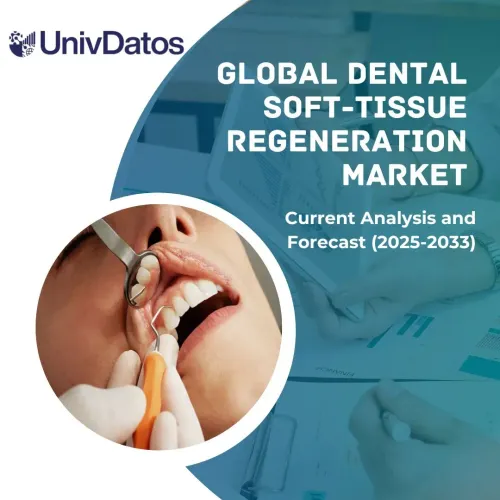- Home
- About Us
- Industry
- Services
- Reading
- Contact Us
Rare Hemophilia Factors Market: Current Analysis and Forecast (2023-2030)
Emphasis on Type (Factor I, Factor II, Factor VII, Factor X, Factor XIII, and Others); Treatment (Factor Concentrates, Fresh Frozen Plasma, Cryoprecipitate, and Others); Region/Country.
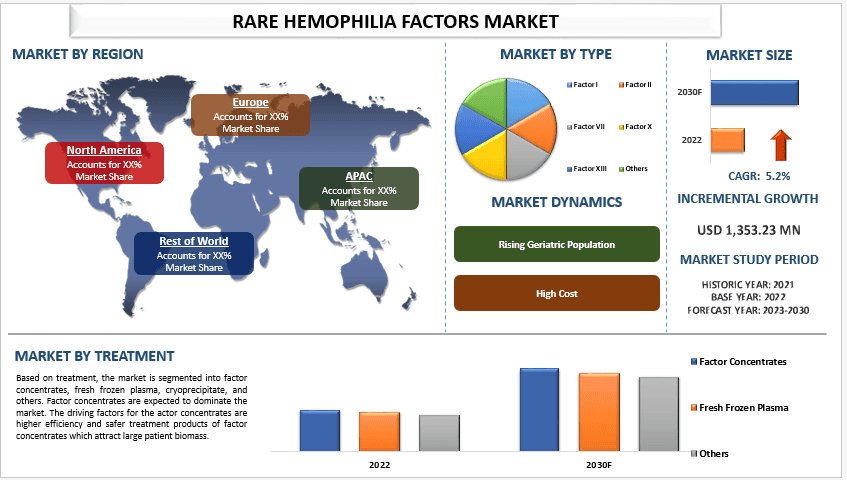
The Rare Hemophilia Factors Device Market was valued at USD 1353.23 Million and is expected to grow at a strong CAGR of around 5.2% during the forecast period (2023-2030) owing to the rising prevalence of rare bleeding disorders. The rising cases of blood-related disorders are considered a driving factor for the rare hemophilia factors market as the increased prevalence of hemophilia has propelled the market to a new extent. Rare blood disorders include anemia, bleeding disorders such as hemophilia, blood clots, and blood cancers such as leukemia, lymphoma, and myeloma. Due to negligence in vitamin deficiency, these disorders have become more prevalent these days. According to the U.S., Centers for Disease Control and Prevention, Hemophilia A affects 1 in 5,000 male births, and about 400 babies are born with hemophilia A every year in the U.S.
Some of the major players operating in the market Novo Nordisk A/S; Bayer AG; CSL; Takeda Pharmaceutical Company Limited; Bio Products Laboratory Ltd.; Octapharma AG; F. Hoffmann-La Roche Ltd; KM Biologics; GC Biopharma Corp. Several M&As along with partnerships have been undertaken by these players to facilitate customers with hi-tech and innovative products/technologies.
Insights Presented in the Report
“Amongst types, the Factor I category to grow with high CAGR during the forecast period”
Based on types, the market is categorized into Factor I, Factor II, Factor VII, Factor X, Factor XIII, and others. The Factor I segment is expected to hold a significant share in the forecast period due to rising product launches for the deficiency. For instance, in October 2020, the National Hemophilia Foundation (NHF) revised its treatment recommendations for congenital fibrinogen (Factor 1) deficiency to include fibryga®, Fibrinogen (Human) Lyophilized Powder, which is a highly purified, virus-inactivated, human plasma-derived fibrinogen concentrate produced by Octapharma. Factor I or fibrinogen deficiency is autosomal recessive in fashion and is a collective term for three different kinds of rare deficiencies namely, afibrinogenemia, hypofibrinogenemia, and dysfibrinogenemia associated with quantitative or qualitative deficiencies of fibrinogen. Top of FormThus, the Factor I category is expected to grow with a high CAGR during the forecast period.
“Amongst treatment, the factor concentrates segment held a significant share in the year 2022”
Based on treatment, the market is segmented into factor concentrates, fresh frozen plasma, cryoprecipitate, and others. The factor concentrates segment held a significant share in 2022 due to the higher efficacy of this treatment method. Factor concentrates are used to replace the missing factor in blood plasma and maintain the workflow of the clotting cascade. Factor concentrates are the basis of prophylactic treatment of severe rare blood clotting disorders. For instance, in July 2023, Octapharma received FDA approval for Balfaxar- prothrombin complex concentrate for the urgent reversal of acquired coagulation factor deficiency in adult patients needing urgent surgery or invasive procedures. Thus, the factor concentrates segment dominated the market in the year 2022 amongst applications.
“Amongst regions, APAC region is expected to grow with high CAGR during the forecast period”
For a better understanding of the market adoption of the rare hemophilic disorders industry, the market is analyzed based on its worldwide presence in countries such as North America (U.S., Canada, and Rest of North America), Europe (Germany, U.K., France, Spain, Italy, Rest of Europe), Asia-Pacific (China, Japan, India, Rest of Asia-Pacific), Rest of World. APAC is expected to grow with the highest CAGR during the forecast period. The growing number of pharmaceutical industries in Asia-Pacific contributes to the growth of the market in this region. Also, the increasing prevalence of rare blood disorders, particularly hemophilia A and hemophilia B, is contributing to the demand for rare hemophilia factors. According to data from Springer, Indian hemophilia (Bleeding disorder) registry had close to 20,000 hemophilia patients all over the country in 2020. Hence, given the large population size of APAC, it is expected to grow with a high CAGR during the forecast period.
Rare Hemophilia Factors Market Report Coverage

Reasons to buy this report:
- The study includes market sizing and forecasting analysis validated by authenticated key industry experts.
- The report presents a quick review of overall industry performance at one glance.
- The report covers an in-depth analysis of prominent industry peers with a primary focus on key business financials, product portfolios, expansion strategies, and recent developments.
- Detailed examination of drivers, restraints, key trends, and opportunities prevailing in the industry.
- The study comprehensively covers the market across different segments.
- Deep dive regional level analysis of the industry.
Customization Options:
The global rare hemophilia factors device market can further be customized as per the requirement or any other market segment. Besides this, UMI understands that you may have your own business needs, hence feel free to connect with us to get a report that completely suits your requirements.
Table of Content
Research Methodology for the Rare Hemophilia Factors Market Analysis (2023-2030)
Analyzing the historical market, estimating the current market, and forecasting the future market of the global rare hemophilia factors market were the three major steps undertaken to create and analyze the adoption of rare hemophilia factors in major regions globally. Exhaustive secondary research was conducted to collect the historical market numbers and estimate the current market size. Secondly, to validate these insights, numerous findings and assumptions were taken into consideration. Moreover, exhaustive primary interviews were also conducted, with industry experts across the value chain of the global rare hemophilia factors device market. Post assumption and validation of market numbers through primary interviews, we employed a top-down/bottom-up approach to forecasting the complete market size. Thereafter, market breakdown and data triangulation methods were adopted to estimate and analyze the market size of segments and sub-segments of the industry pertains to. Detailed methodology is explained below:
Analysis of Historical Market Size
Step 1: In-Depth Study of Secondary Sources:
A detailed secondary study was conducted to obtain the historical market size of the rare hemophilia factors device market through company internal sources such as annual reports & financial statements, performance presentations, press releases, etc., and external sources including journals, news & articles, government publications, competitor publications, sector reports, third-party database, and other credible publications.
Step 2: Market Segmentation:
After obtaining the historical market size of the rare hemophilia factors device market, we conducted a detailed secondary analysis to gather historical market insights and share for different segments & sub-segments for major regions. Major segments are included in the report as type, treatment, and region. Further country-level analyses were conducted to evaluate the overall adoption of testing models in that region.
Step 3: Factor Analysis:
After acquiring the historical market size of different segments and sub-segments, we conducted a detailed factor analysis to estimate the current market size of the rare hemophilia factors device market. Further, we conducted factor analysis using dependent and independent variables such as type, treatment, and region of the rare hemophilia factors device market. A thorough analysis was conducted for demand and supply-side scenarios considering top partnerships, mergers and acquisitions, business expansion, and product launches in the rare hemophilia factors device market sector across the globe.
Current Market Size Estimate & Forecast
Current Market Sizing: Based on actionable insights from the above 3 steps, we arrived at the current market size, key players in the global rare hemophilia factors device market, and market shares of the segments. All the required percentage shares split, and market breakdowns were determined using the above-mentioned secondary approach and were verified through primary interviews.
Estimation & Forecasting: For market estimation and forecast, weights were assigned to different factors including drivers & trends, restraints, and opportunities available for the stakeholders. After analyzing these factors, relevant forecasting techniques i.e., the top-down/bottom-up approach were applied to arrive at the market forecast for 2030 for different segments and sub-segments across the major markets globally. The research methodology adopted to estimate the market size encompasses:
- The industry’s market size, in terms of revenue (USD) and the adoption rate of the rare hemophilia factors device market across the major markets domestically
- All percentage shares, splits, and breakdowns of market segments and sub-segments
- Key players in the global rare hemophilia factors device market in terms of products offered. Also, the growth strategies adopted by these players to compete in the fast-growing market
Market Size and Share Validation
Primary Research: In-depth interviews were conducted with the Key Opinion Leaders (KOLs) including Top Level Executives (CXO/VPs, Sales Head, Marketing Head, Operational Head, Regional Head, Country Head, etc.) across major regions. Primary research findings were then summarized, and statistical analysis was performed to prove the stated hypothesis. Inputs from primary research were consolidated with secondary findings, hence turning information into actionable insights.
Split of Primary Participants in Different Regions
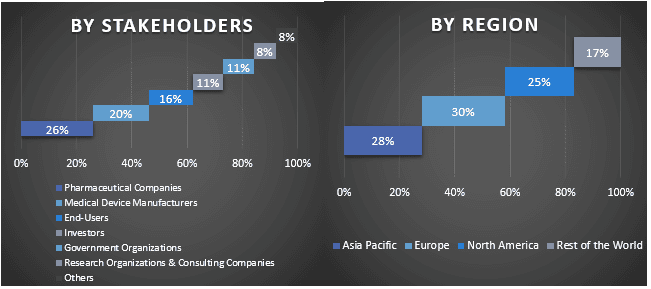
Market Engineering
The data triangulation technique was employed to complete the overall market estimation and to arrive at precise statistical numbers for each segment and sub-segment of the global rare hemophilia factors device market. data was split into several segments & sub-segments post studying various parameters and trends in the areas of the type, treatment, and region in the global rare hemophilia factors device market.
The main objective of the Global Rare Hemophilia Factors Market Study
The current & future market trends of the global rare hemophilia factors device market were pinpointed in the study. Investors can gain strategic insights to base their discretion for investments on the qualitative and quantitative analysis performed in the study. Current and future market trends determined the overall attractiveness of the market at a regional level, providing a platform for the industrial participant to exploit the untapped market to benefit from a first-mover advantage. Other quantitative goals of the studies include:
- Analyze the current and forecast market size of the rare hemophilia factors device market in terms of value (USD). Also, analyze the current and forecast market size of different segments and sub-segments
- Segments in the study include areas of the type, treatment, and region
- Define and analysis of the regulatory framework for the rare hemophilia factors device industry
- Analyze the value chain involved with the presence of various intermediaries, along with analyzing customer and competitor behaviors of the industry
- Analyze the current and forecast market size of the rare hemophilia factors device market for the major region
- Major countries of regions studied in the report include Asia Pacific, Europe, North America, and the Rest of the World
- Company profiles of the rare hemophilia factors device market and the growth strategies adopted by the market players to sustain in the fast-growing market
- Deep dive regional level analysis of the industry
Frequently Asked Questions FAQs
Q1: What is the current market size and growth potential of the global rare hemophilia factors market?
Q2: What are the driving factors for the growth of the global rare hemophilia factors device Market?
Q3: Which segment has the largest share of the global rare hemophilia factors device market by type?
Q4: What are the emerging technologies and trends in the global rare hemophilia factors device market?
Ans: The growing therapeutic advancements comprising gene therapy and bispecific antibodies are one of the major trends in the market.
Q6: Who are the key players operating in the global rare hemophilia factors device market?
Related Reports
Customers who bought this item also bought

